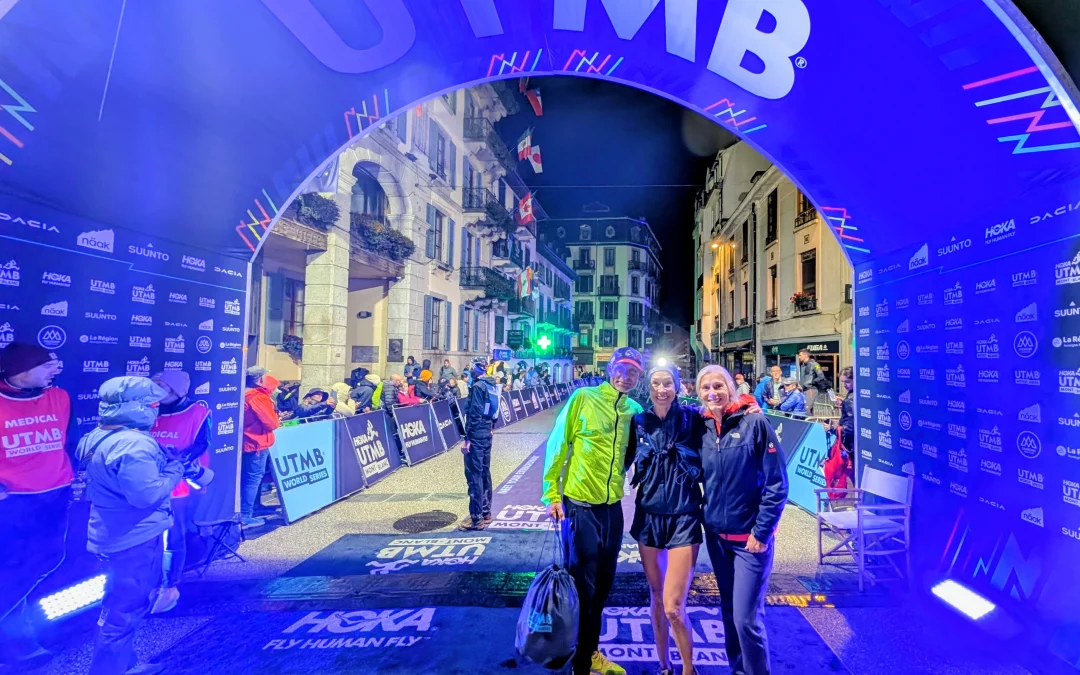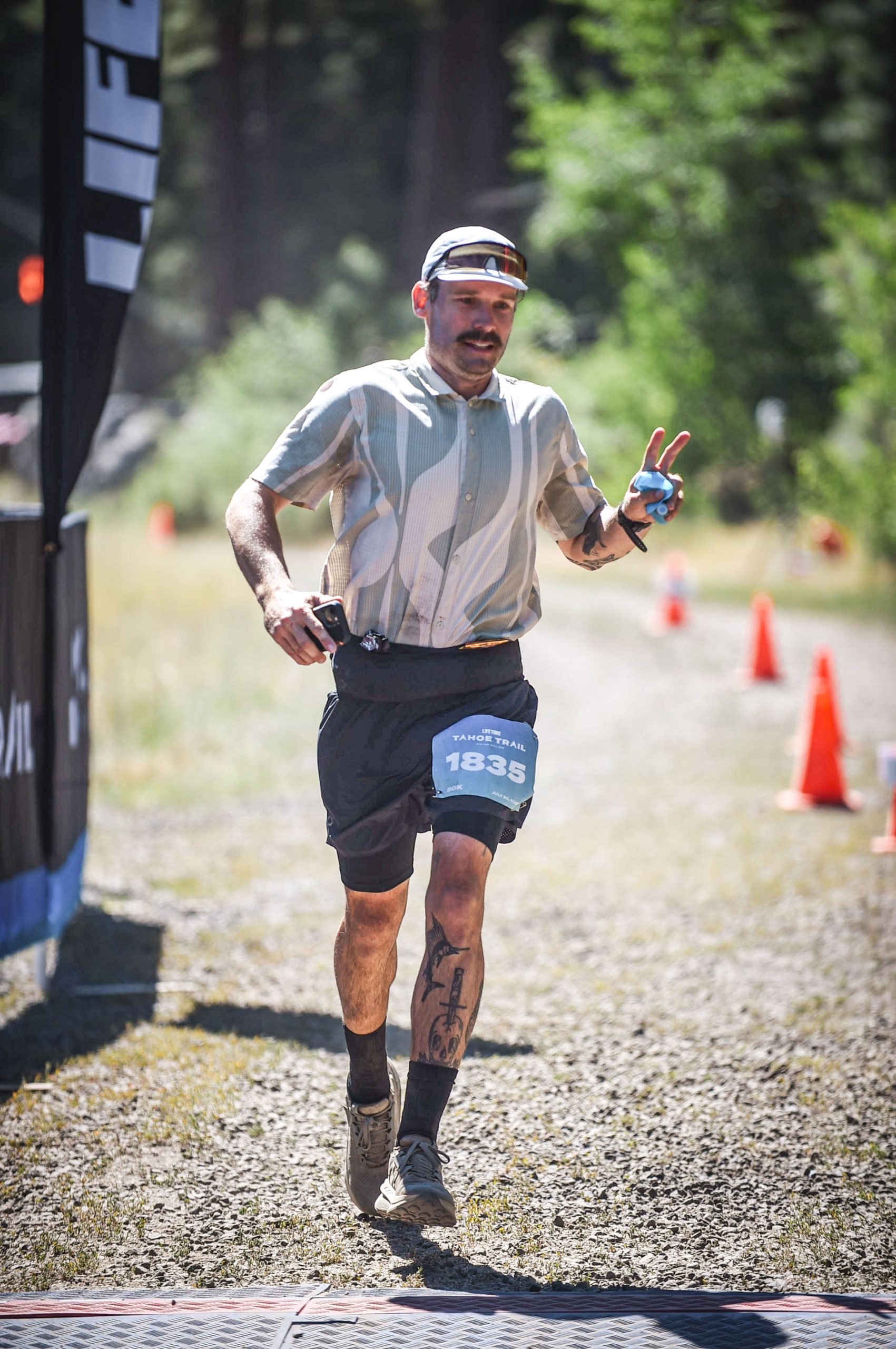Before diving into the specifics, a quick scene-setter: CCC at UTMB Week is a masterclass in patience, pacing, and problem-solving. For my first international race, the goal wasn’t fireworks—it was execution. What follows is a candid Q&A on how I navigated the climbs, weather, gear choices, and mindset to finish strong and come away with an age-group win.
What was your race-day objective, and how did it evolve once you were on course?
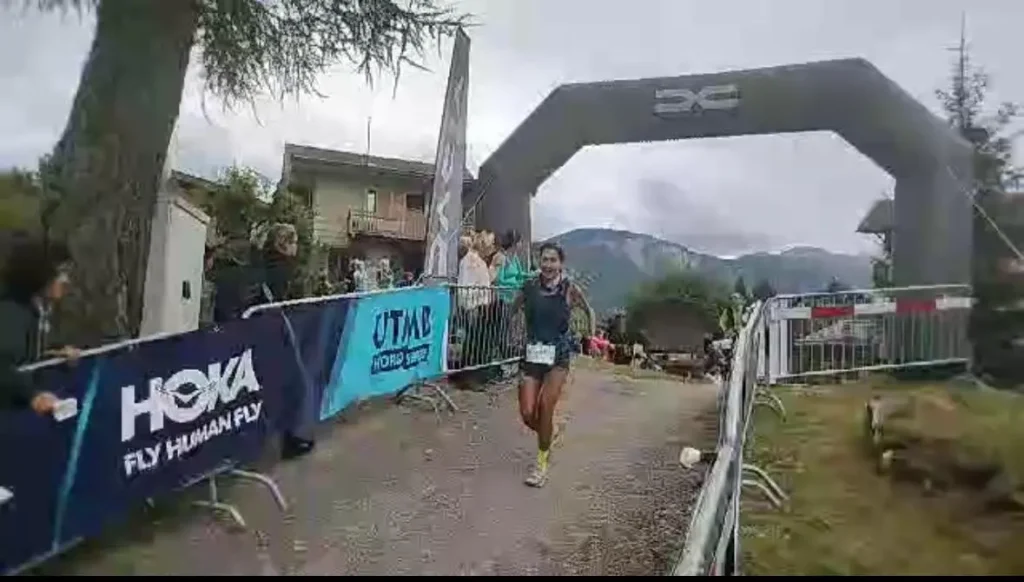
Going in, my goal was simple: finish. It was my first chance to compete outside the U.S., and I’ve dreamed of racing a UTMB World Finals event since the early 2000s. I had the CCC (100K) or UTMB (100M) in my sights for years and believed I could be competitive in the 55–59 age group—maybe even hang with some 40-something women on a good day.
But once we funneled out of Courmayeur and hit the singletrack “conga line,” reality set in. Poles, narrow trail, very few passing options, and a 4,600-foot climb in the first six miles—talk about a grinder. I relaxed, matched the flow, and focused on getting from aid station to aid station while staying topped up on hydration and calories. The target became: finish strong, not fast.
The opening climb can set the tone. How did you pace it?
That first ascent is humbling. Watching the valley floor shrink below me, I reminded myself to conserve. No hero moves. I was intentional about steady forward progress rather than chasing pace. I’d rather build my race than blow it in the first hour. I gave a strong, controlled effort—enough to feel it, not enough to overextend. That restraint paid off later.
Which section demanded the most from you—and why?
Two spots: the initial climb out of Courmayeur and the final push from Trient to La Flégère. Conservation is everything at CCC, and the weather can flip the script at any moment. When the rain rolled in, temperatures dropped, and the trails turned slick. Darkness plus soggy footing required careful, deliberate movement. It wasn’t a light sprinkle—it was significant. Managing risk on wet rock while staying mentally present was the game.
How did weather and altitude shape your on-the-fly decisions?
When the rain started, I shifted from warm-weather gear (shorts, race tank) to a long sleeve, a lightweight waterproof breaker, gloves, and a beanie—my standard wet/cold setup. Footwear took the most tinkering. My Nike Ultrafly (with Vibram outsole) handled the slick rock well, but I still changed shoes and socks at Trient (mile ~43).
I tried the North Face Altamesa 500s, then swapped back at Vallorcine after realizing I missed the Ultrafly grip. Fueling stayed consistent: water, SaltStick Fast Chews, Vespa, and Honey Stinger chews/waffles. Later, hot soup with broth and rice helped in the cold. I mostly use my own fuel and—thankfully—never had stomach issues.
You won your age division. What do you credit most—training, taper, gear, or strategy?
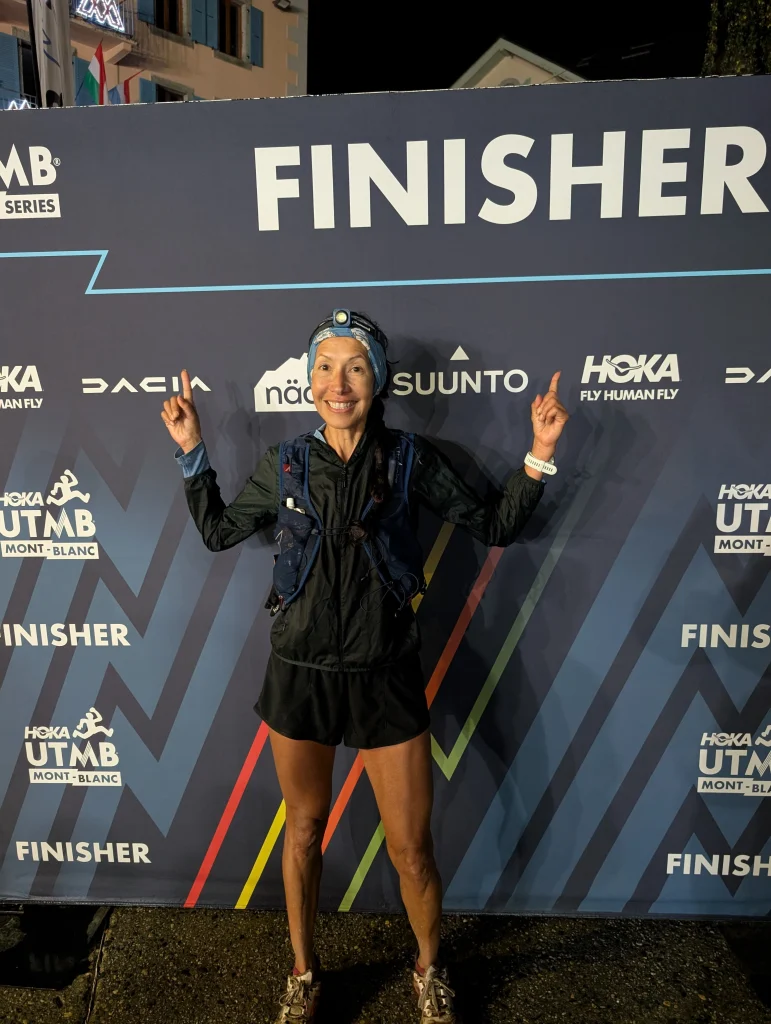
A long runway of consistent work. I’ve done 100+ ultras since the early 2000s, and that volume builds more than fitness—it builds reliable mental focus. Endurance doesn’t show up from a single block; it’s layered over years. Physiological adaptation and neuromuscular economy compound with steady aerobic training. Strategy-wise, I stuck to my plan: don’t go out hard, build the race, manage the weather curveballs, and keep fueling simple and steady.
Check out the finish times and more information here.
You were close to the top-100 women. Was there a small tweak that might have changed it?
Honestly, I had no idea where I stood overall. At Trient my crew told me I was second in my age group, but I didn’t know my broader placing and didn’t chase it. The priority was to get through the rain and finish strong without breaking myself. Place would be whatever it would be.
Gear rundown—what worked, what didn’t, and what you were glad to have?
- Pack & Hydration: UltraAspire Alpha 6.0 race vest with two 500ml soft flasks.
- Shoes: Nike Ultrafly (primary), North Face Altamesa 500 (briefly).
- Poles: Black Diamond Carbon Z (used a few miles; I typically run without).
- Apparel: Rabbit shorts and tank, long sleeve layer, Marmot waterproof light breaker, gloves, Buff/beanie.
- Socks: Balega Blister Resist Mini Crew and Hidden Contour No Show.
I’m big on comfort and familiarity—nothing untested on race day. The item I was most grateful for in the conditions? The waterproof breaker, hands down. And the Ultrafly grip when the rocks turned slick.
How did European aid-station culture compare to U.S. races?
Bigger tents, more structure, and a different menu vibe. I saw sparkling water on tap, rice and broth, cheeses, meats, and small crackers—less of the classic U.S. spread (trail mix, cookies, chips, candy bars, PB sandwiches, and canned sodas). I mostly stuck to my own nutrition, with rice/broth later on. The organization was impressive—helpful but also a bit overwhelming mid-race if you’re used to American stations.
For athletes eyeing CCC, what three course-specific skills should they train?
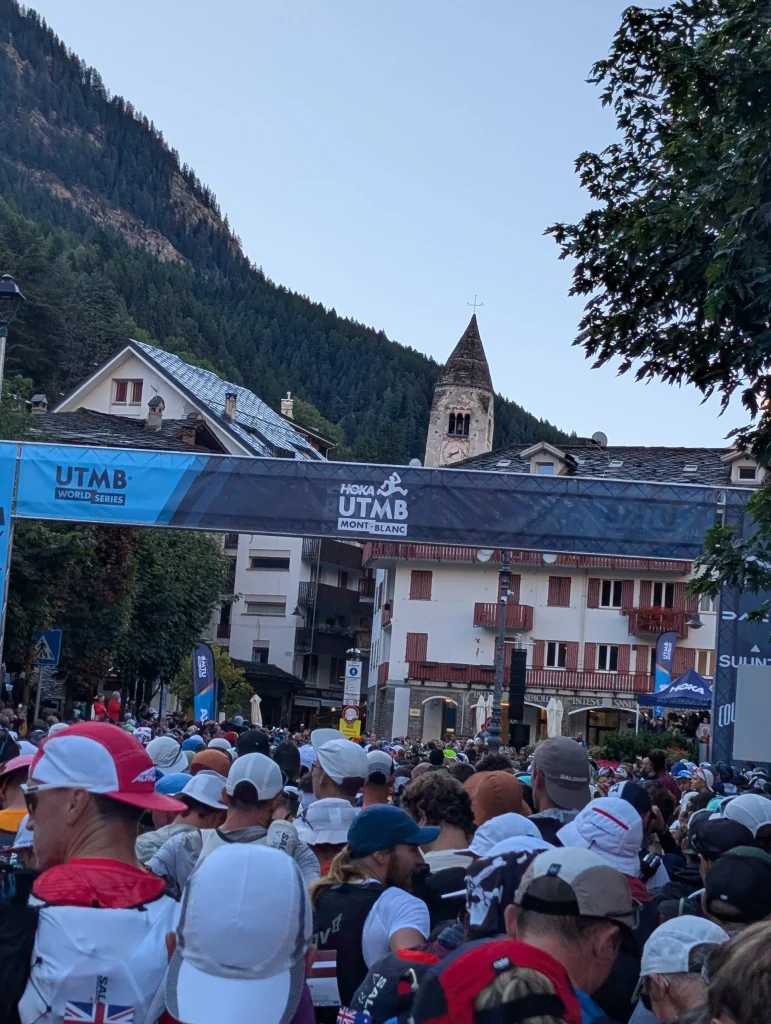
Energy Conservation on Extended Climbs
Practice steady-state climbing for long durations. Hike with purpose, keep cadence smooth, and learn to hold back early. Simulate with uphill repeats or treadmill climbs at low-moderate effort.
Technical Descents on Wet Rock
Work on foot placement, short quick steps, and relaxed arms. Train on varied terrain in all conditions. If it’s raining in training, go—carefully. Build trust in your shoes and in your body’s ability to adapt.
Night Ops & Weather Management
Do night runs in the rain and cold. Dial your layer system (head to toe), practice glove swaps, and refine headlamp brightness/beam choices. Rehearse quick gear and sock/shoe changes so you’re calm when it counts.
What about the mental side—and advice for bouncing back when things go sideways?
There’s always unpredictability in mountain ultras. You need resilience: the ability to accept what the day hands you and still move forward with intention. If it’s not your day, a DNF doesn’t define you—how you respond does. I coach athletes to process the outcome, extract the lesson, and get practical about the next build. Keep perspective: you chose this. The goal is to experience the course, the community, and your own best effort—then finish knowing you honored all three.
Final word: why do this?
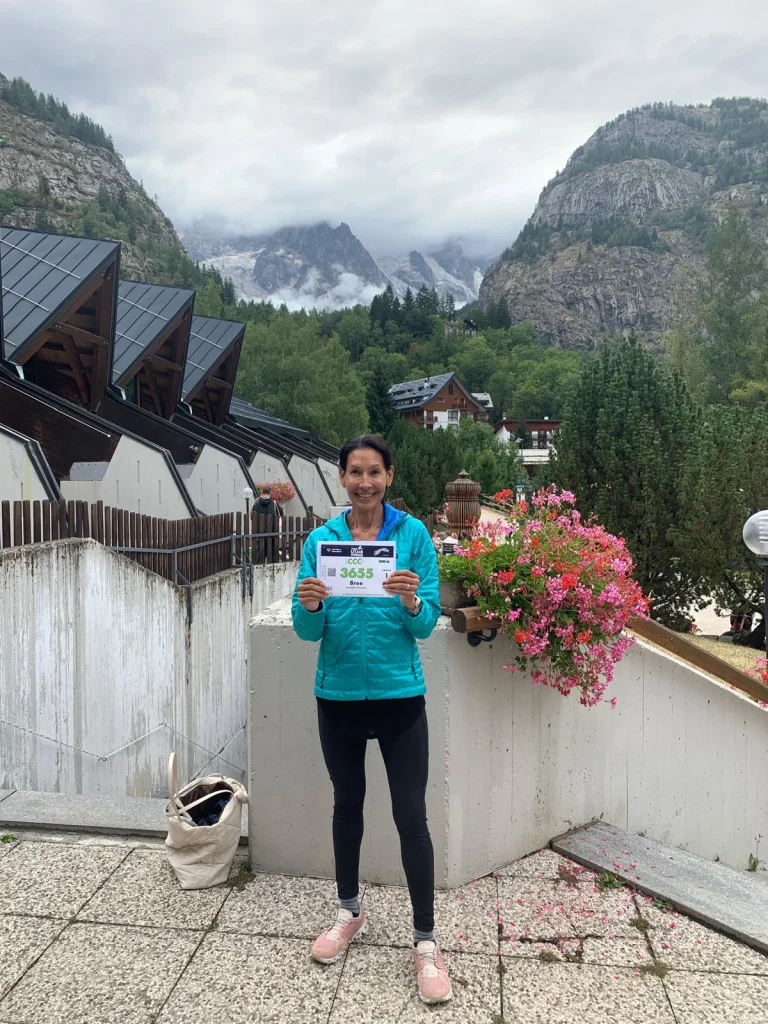
For the love of it. For the mountains, the challenge, and the chance to finish strong—no matter the conditions. Train consistently, respect the course, keep your fueling simple, layer smart, and race the day you’re given. That’s how you Live Well and Finish Strong.

